#birg
Text



Just wanted to share the birg patch I embroidered on my hoodie! I feel like the fully completed photo dosent do it justice because some of the threads have swayed a bit since it’s been washed
#birgworld#birg#embroidery#art#diy#sewing#thread#alien#speculative biology#fashion#threads#iguanodon’t#birg fan art
476 notes
·
View notes
Text

Another @iguanodont 's birgworld fanart.
A Birg climbing a mountain while a Cliffstriker watches... Where are they going...
A simple gouache practice this time with new techniques such as layering an underpaint before painting. Still need to tame this new brush...
#art#illustration#gouache#my art#brart#brazilian artist#brazilian artists#fan art#birg#birgworld#worldbuilding#spec bio#speculative biology#spec evo#speculative evolution#speculative zoology
138 notes
·
View notes
Text
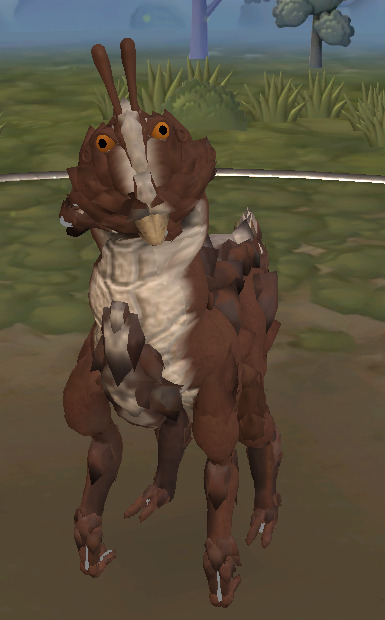
I made a Birg in Spore! @iguanodont

Here it is next to the Birrin I did a while ago!
Sick moves bro.
707 notes
·
View notes
Text

Last Weekend I was at the Oberurseler Feyerei, a renaissance fair type of event in Oberursel.
I think this was a buzzard.
2 notes
·
View notes
Text
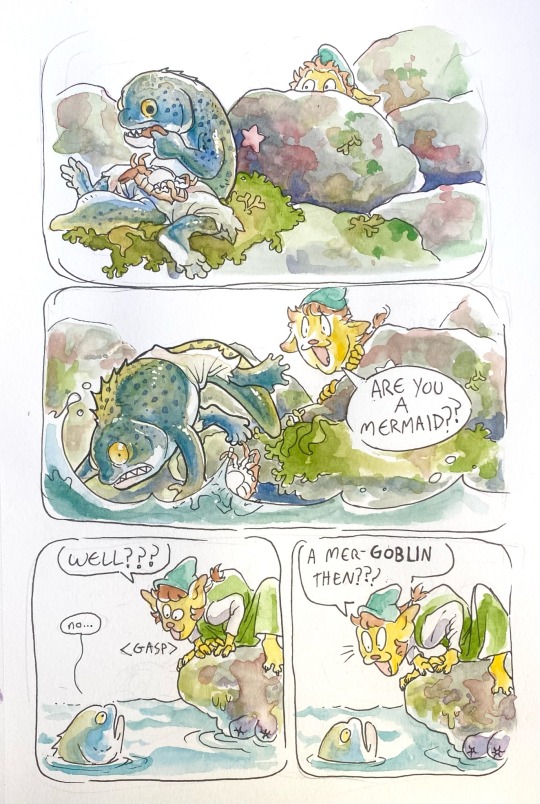
A lonely little fish-creature meets a goblin. Not that young Ahab knew what a goblin was at the time, but they became good friends nonetheless. The goblin’s name is Checkermint, or “Checkers”.

#there’s lore and context and yadda yadda but this is just a cute thing I wanted to draw#ocs#Ahabblefrup#dnd#kuo toa#goblins#I’ll return to birg stuff eventually I am just focusing on other things rn
3K notes
·
View notes
Text

Lowell Birge Harrison (American, 1854-1929) - Grand Central and the Biltmore in Hazy Twilight
504 notes
·
View notes
Photo

La nuit du phoque (1974), dir. Jean-Jacques Birgé & Bernard Mollerat
6K notes
·
View notes
Text

Sunrise from Quebec by Lowell Birge Harrison (American, 1854--1929)
572 notes
·
View notes
Text

this is Wooloob, a birg from @iguanodont's world. he is spectacularly boring and thus forever alone, despite being a good glassblower and handsomely foreign looking. his name was given to him by fairy godmother @dimetrodone and is no fault of mine
299 notes
·
View notes
Text

Hehe Birgworld oc
I finally attempted to draw a birg. I introduce Chik’Whi. They’re a weird, polite birdbug from a Puyok tribe. Their only friends are random bugs they find in the brush. They like to chat, but…as I said their only friends are bugs. 😔
The birdbugs and their world belong to @iguanodont
198 notes
·
View notes
Text
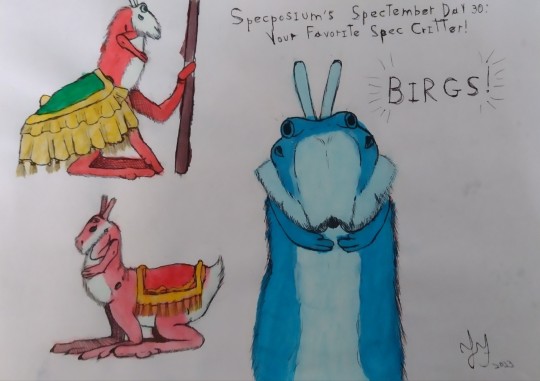
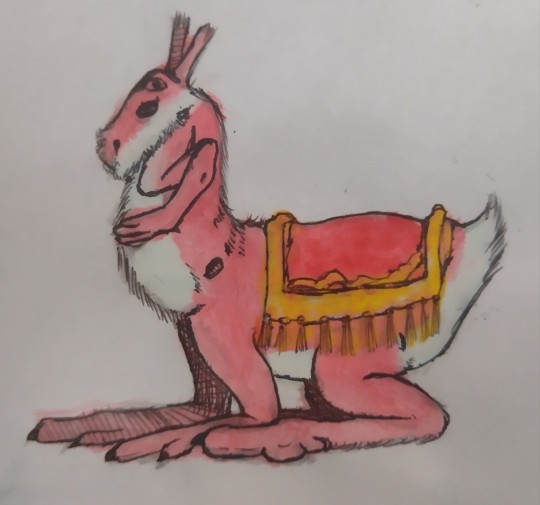


Specposium's Spectember day 30: Your favourite spec critter!
I like many spec projects but one that i like the most is @iguanodont Birgworld here on Tumblr. The birgs are simply so charismatic and nice to draw so i used this as an exercise with gouache, i like it, in the middle of the process i hated it but it came out nicely after the lineart. Not sure about birg's color variety tho.
This was a nice spectember challenge and it was a good exercise at spec and art, looking forward for the next one. Back to the normal posts now.
#birgworld#birg#fan art#specposium#spectember#spectember 2023#worldbuilding#art#illustration#spec bio#speculative biology#spec evo#speculative evolution#speculative zoology#alien#alien species#alien sophont#my art
283 notes
·
View notes
Text

Title: Sunburst at Sea
Artist: L. Birge Harrison
Date: 1913
Genre: Marina
#art history#art#painting#artwork#history#museums#culture#vintage#curators#l. birge harrison#classicalcanvas
171 notes
·
View notes
Photo

Some months ago, I created a series of maps and diagrams for @iguanodont‘s Birdbug worldbuilding project, representing the planet inhabited by their original species and its planetological data. This isn’t the first time I mapped out this planet, as I was also commissioned by Ripley back in 2020 back when I didn’t have nearly as much experience and knowledge as I do now. Two years later, I’ve been commissioned once again to revisit this world and its peculiarities.

This first map (in Equirectangular projection and poles-centered perspective) depicts the elevation for this planet, with a color gradient applied to the data.
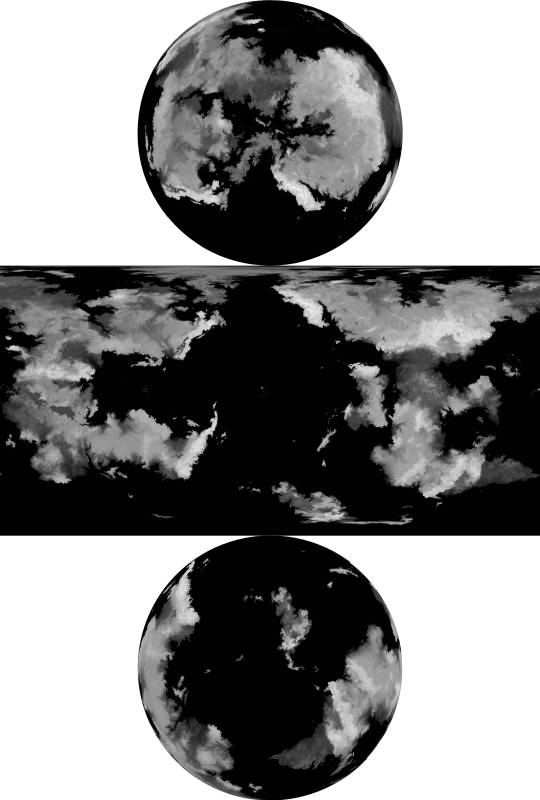
Here is the same elevation data, presented without the color gradient.
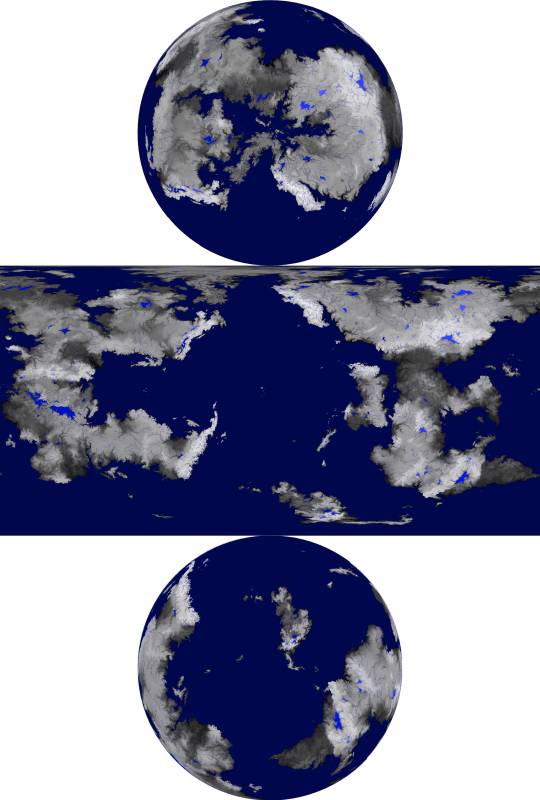
This time, the elevation is presented with bodies of liquid water included, such as rivers, oceans, and lakes.

and in this one, the water is isolated from the other data, against a white background

Next, there are the surface temperatures that occur on this planet, the key to which is shown above. The four maps below show the seasonal temperatures for land and sea, in order of Northern Spring Equinox, Northern Summer Solstice, Northern Autumn Equinox, and Northern Winter Solstice.

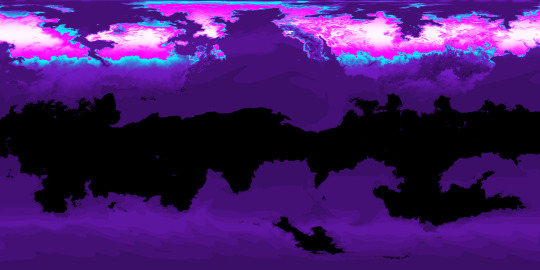
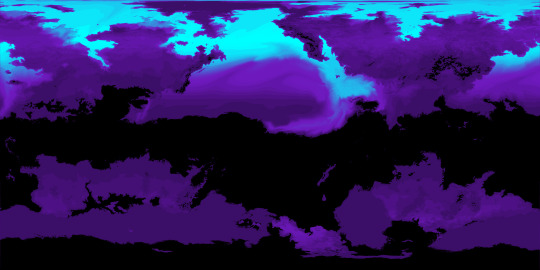

Correlating closely to the above data is the snow and ice cover, which is fairly extensive on this planet owing to its high obliquity and distance from its star. Land ice only occurs where the snow falls and is compacted year-round, but snow and sea ice can be much more seasonal.
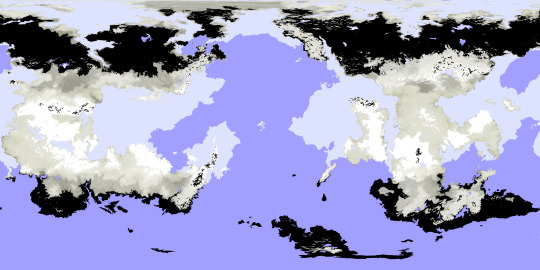
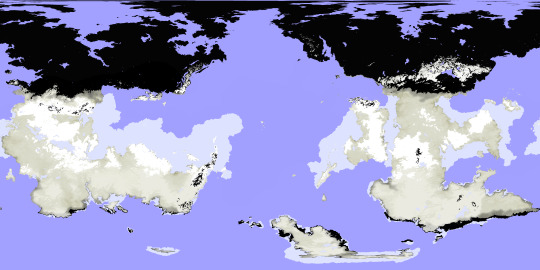
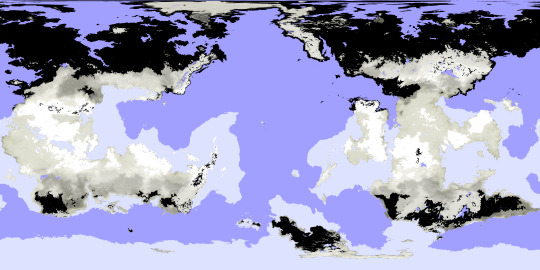
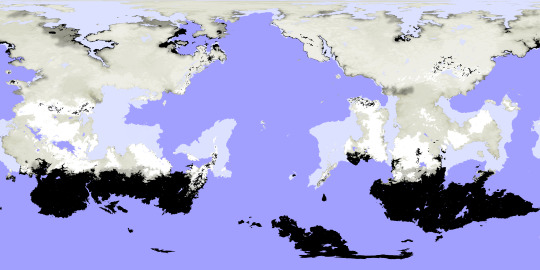
Seasonal precipitation levels were another important phase of this project, and the below diagram shows those levels for a given latitude (y-axis) on a given date (x-axis), with a key attached.
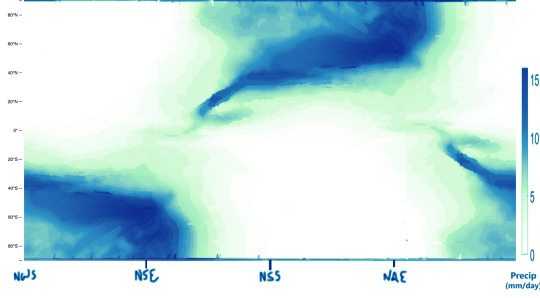
My reference for creating the above graphic is the figure below, which comes from a 2019 paper by A.H. Lobo and S. Bordoni titled “Atmospheric Dynamics of High Obliquity Planets”, and shows Earth’s precipitation levels compared to those of a planet with an 85° obliquity.

The following maps can now be better understood in light of these diagrams and keys.
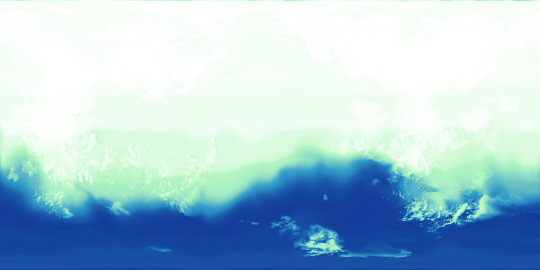
-Northern Spring Equinox
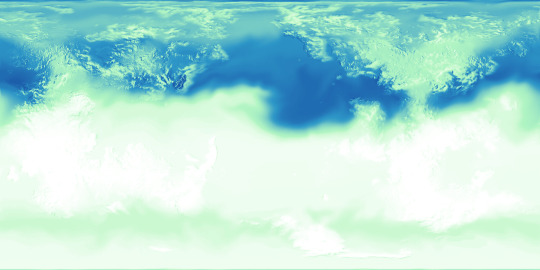
-Northern Summer Solstice
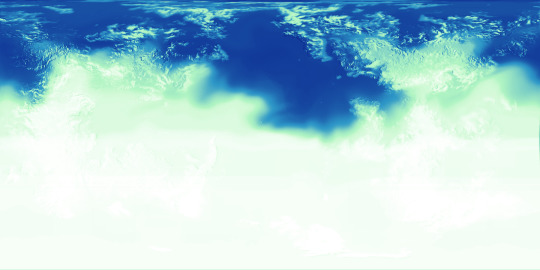
-Northern Autumn Equinox

-Northern Winter Solstice
I was also tasked with mapping out the extent and density of this planet’s vegetation (or at least its alien equivalent), and from this you can see how wildly it varies by season, with very few year-round holdings. Precipitation is a major factor in where it is possible for plants to flourish, but snow cover and the extreme temperature swings limit it too. Near either pole, for example, within the space of a year temperatures soar far above Earth’s upper limits and also plummet below freezing; if either extreme were to be the annual norm for a region, some plants might adapt to those conditions, but because of the wild fluctuation any adaptations to one extreme would leave plants especially vulnerable to the other. These regions, then, remain barren regardless of rainfall or brief windows of mild temperatures, while areas with less wide temperature ranges allow for at least brief periods of flourishing.

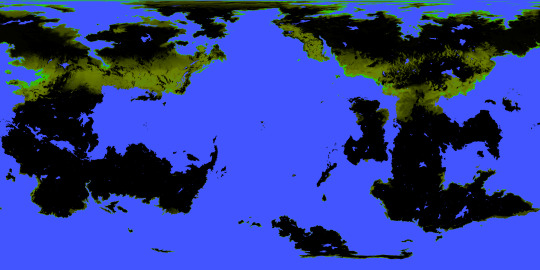
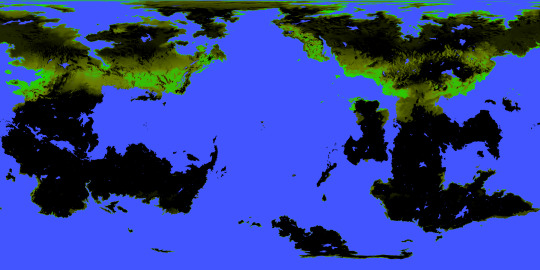
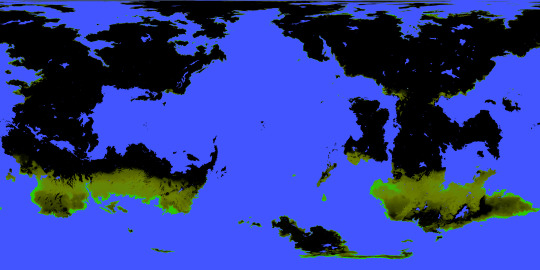
Determining the surface temperatures for this planet required a lot of background work. The first piece of the puzzle for this was knowing the number of daily hours of sunlight for a given latitude and date, which is exemplified first in this diagram for Earth:

and then for the Birdbug planet, below. Since this planet rotates on an axis of 60 degrees, there are many more latitudes within range of either pole that experience periods of sunlight and darkness lasting longer than a day. The higher the latitude, the longer this period lasts, with the poles themselves experiencing either condition for half a year at a time.
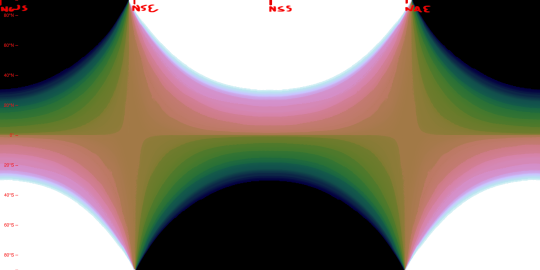
Another important factor is the height to which the sun is seen to rise (more scientifically, the angle at which the sun’s light hits parts of the planet’s surface), seen here first for Earth and then for the Birdbug planet. In these diagrams, white represents the sun reaching the zenith of the sky (meeting the surface at a 90° angle), and black represents the sun failing to appear above the horizon (meeting at an angle of 0° or below), while shades of green and purple stand in for angles between those extremes. For Earth and the Birdbug planet alike, the sun reaches the zenith within the bounds of either planet’s Tropic circles of latitude, and fails to rise at all only within the Polar circles of latitude; the difference in obliquity means that the Birdbug planet’s key circles of latitude are flipped compared to Earth’s.
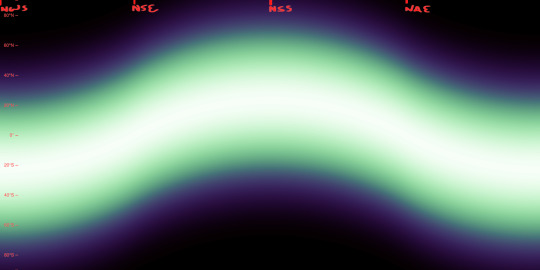
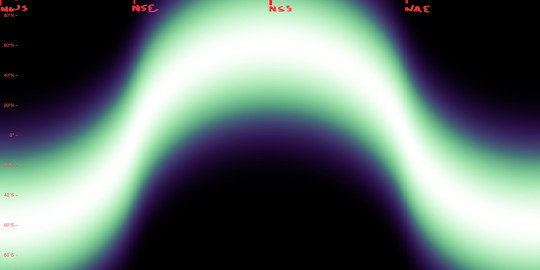
The duration of sunlight and the angle at which that sunlight is reaches the planet’s surface determine a planet’s Insolation, that is, the amount of solar energy it receives. The first image below is a preexisting diagram of Earth’s Insolation, where it is measured in watts per square meter. The next two images are my own attempts at replicating this data for Earth, and then for the Birdbug planet.

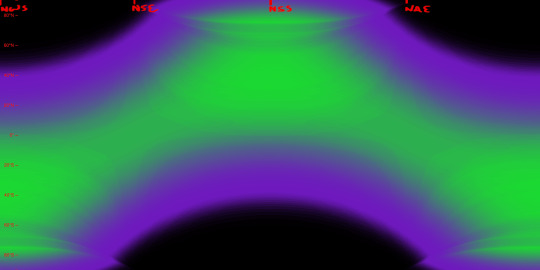
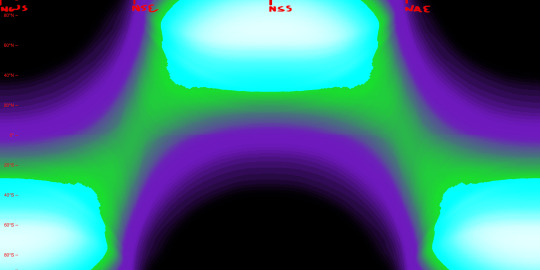
As seen in the diagrams above, Insolation on the Birdbug planet differs from Earth not only in its latitudinal distribution, but also in its sheer intensity at the higher latitudes. Compared to Earth there are twice as many latitudes for which the sun is shining longer than one rotational period, and many of those latitudes see the sun shine at a direct or nearly direct angle, whereas the Polar circles of latitude on Earth see the sun shine much more obliquely.
Below, we can see the data that all the above figures were instrumental in finding: that is, surface temperatures. The first image is a preexisting figure that measures Earth’s mean surface temperatures by date and latitude, and below that is my attempt at replicating the data by my own process.
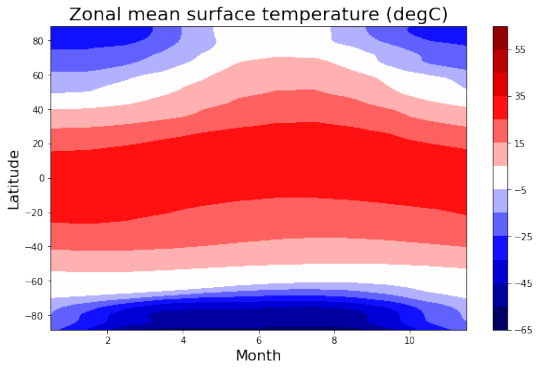
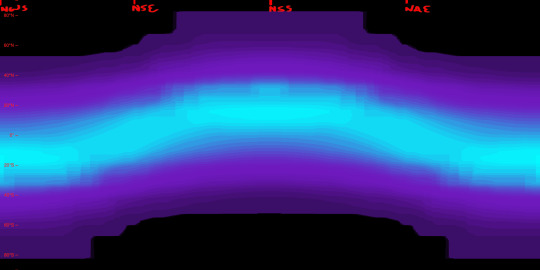
This is done not by just copying the seasonal Insolation data, but by also factoring in the yearly average for each latitude.
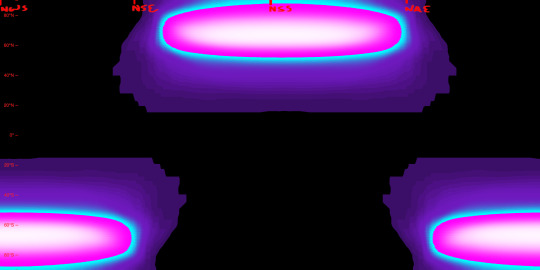
Above, we see the temperatures of the land by date and latitude, and below, we see the temperatures at the surface of the sea, which lag behind the land temperatures and remain comparatively mild.

Lastly, here’s an image I created to combine the snow and ice cover as well as the vegetation extent and density, as of the Northern Spring Equinox. This, along with the elevation map also seen here, is what I uploaded to maptoglobe.com in order to produce the screenshot at the top of this post.
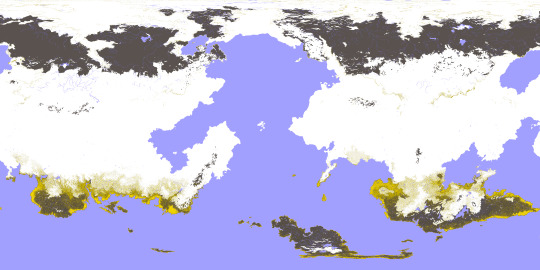
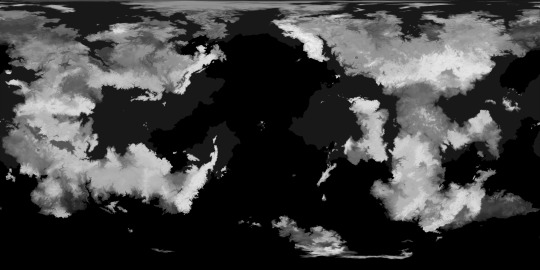
These maps and figures (except for the preexisting ones) were all created in Photopea. Higher resolution versions of many of these images can be seen in my dedicated Reddit posts, linked below:
reddit post one, reddit post two
2022
#mapmaking#imaginary maps#worldbuilding#major project#imaginary planetology#elevation#waterways#river systems#surface temperatures#ice and snow cover#sea ice#precipitation#vegetation#Insolation#high obliquity planets#explanatory diagrams#digital rendering#Photopea#Birdbug worldbuilding project#Birgs#Birgworld#2022#digital painting#extremely long post#Christopher Maida Artwork
616 notes
·
View notes
Note
Hello!!
I really adore all the birg worldbuilding!!!
I was planning on making my own birg OCs and story, but i needed to ask, i saw these birg predators that look like bigger birgs but with mantis arms; Do they have cultures? How do they get along with birgs? I NEED TA KNOOWW
Tbh I’ve waffled on how I want to approach them for a while, in their current iteration they are very intelligent animals, as a chimp or gorilla with the habits of a lion might be to us. They may have rudimentary cultures unique to their small social units like orcas, but they lack a fully fledged language. They are frequently solitary or in bonded pairs, working collaboratively to raise cubs for up to 5 years before the offspring set out on their own. As a pair, they are formidable predators, one working to flush prey into the ambush of the other, with occasional support from their young. Large midarms are used to restrain prey while the hooked beak finds a vital artery or the brain of the animal. The beak-like chelicerae are also capable of protruding from the face to give a little extra reach to their bite.
They produce low hums and grumbles to communicate, many of which are below the register of a birg’s ears, but resonate through their bodies in an unsettling manner. Their elbow pinnae are much more prominent than those of birgs. Rather than hibernate, most extant populations cross the ice belt each fall to follow the sun to the other hemisphere. Others do as the ombs and continue to hunt through the long night.
As for their relationship with birgs, they are frequently embellished in art and folklore as werewolf or ogre-like monsters. A widespread story explaining the Twowi taboo against consuming the flesh of trunkhorses warns that those who wantonly spill blood as the HaJhaub do will be cursed to transform into one. The kakroum warn their children to never stray from their nanny or speak curses of their aunties, lest the Oh’jub should hear them and steal them away in the night. In some tales, the child is simply eaten, but other legends insist that the Oh’jub produces no offspring of her own, but instead transforms young birgs into more Oh’jub by feeding them her own blood, as a birg would nourish their infant larvae.

So yeah hope this helps
—————
For more misc worldbuilding, see my patreon
Kofi
Inprnt
330 notes
·
View notes
Text

Lowell Birge Harrison (American, 1854–1929) - Midocean
650 notes
·
View notes
Text
Swooce!!! Wasn’t feeling very inspired w my aliens so I made a quick doodle of someone else’s instead!!!

(Ignore the fact she’s naked i am NOT going to attempt to draw birg clothes)
Swooce belongs to the talented @iguanodont btw!!!! Go check them out :)
220 notes
·
View notes